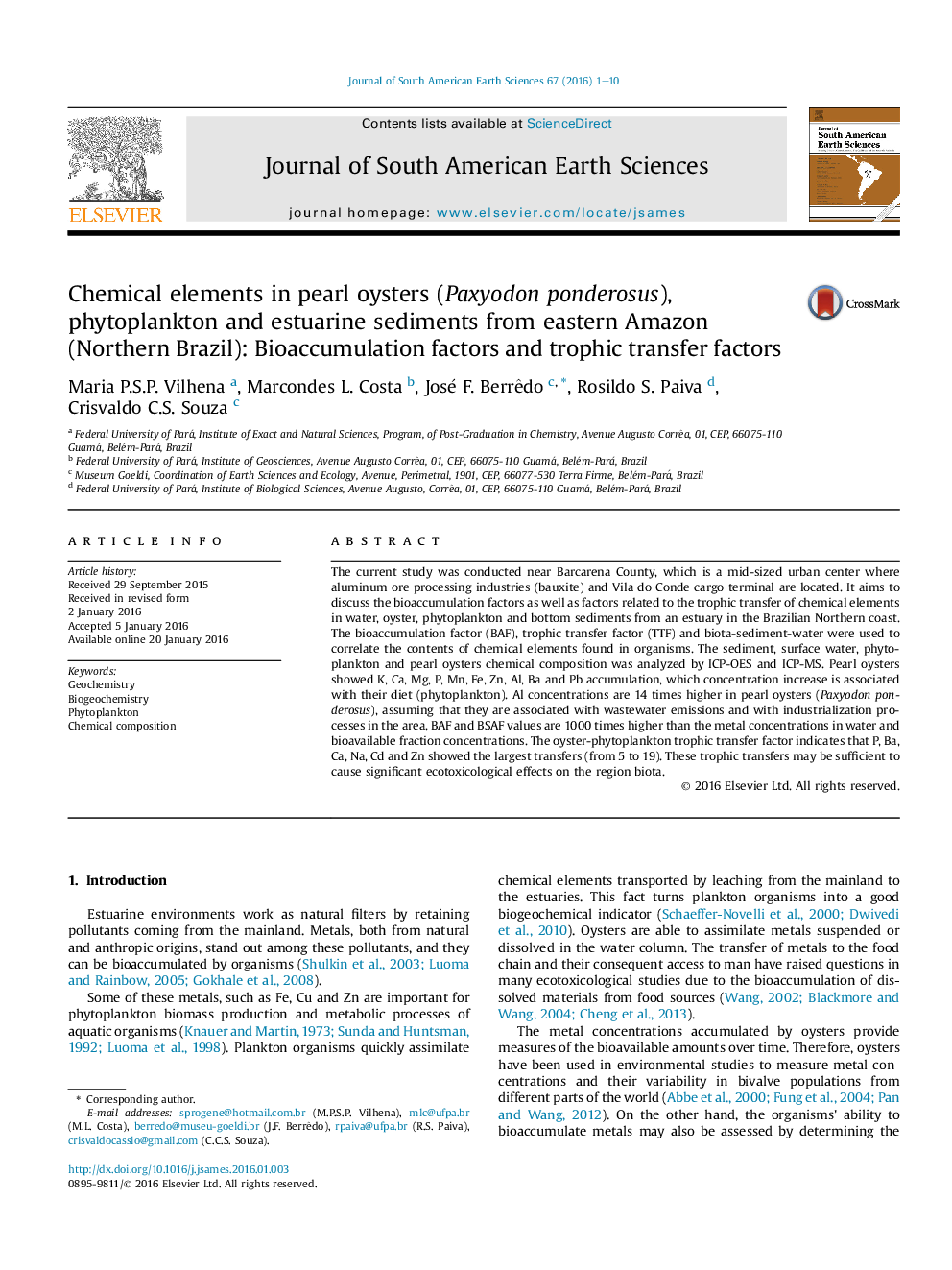| کد مقاله | کد نشریه | سال انتشار | مقاله انگلیسی | نسخه تمام متن |
|---|---|---|---|---|
| 4682006 | 1635143 | 2016 | 10 صفحه PDF | دانلود رایگان |

• Metals, both from natural and anthropic origins, can be bioaccumulated by organisms.
• Pearl oysters accumulate metal of 1000–900,000 times the concentrations of the metals in the estuary waters of the Amazonia.
• The element contents probably reflect different biological and physiological availabilities in this species.
• The trophic transfer is the most likely route of metal bioaccumulation in pearl oysters (Paxyodon ponderosus).
The current study was conducted near Barcarena County, which is a mid-sized urban center where aluminum ore processing industries (bauxite) and Vila do Conde cargo terminal are located. It aims to discuss the bioaccumulation factors as well as factors related to the trophic transfer of chemical elements in water, oyster, phytoplankton and bottom sediments from an estuary in the Brazilian Northern coast. The bioaccumulation factor (BAF), trophic transfer factor (TTF) and biota-sediment-water were used to correlate the contents of chemical elements found in organisms. The sediment, surface water, phytoplankton and pearl oysters chemical composition was analyzed by ICP-OES and ICP-MS. Pearl oysters showed K, Ca, Mg, P, Mn, Fe, Zn, Al, Ba and Pb accumulation, which concentration increase is associated with their diet (phytoplankton). Al concentrations are 14 times higher in pearl oysters (Paxyodon ponderosus), assuming that they are associated with wastewater emissions and with industrialization processes in the area. BAF and BSAF values are 1000 times higher than the metal concentrations in water and bioavailable fraction concentrations. The oyster-phytoplankton trophic transfer factor indicates that P, Ba, Ca, Na, Cd and Zn showed the largest transfers (from 5 to 19). These trophic transfers may be sufficient to cause significant ecotoxicological effects on the region biota.
Figure optionsDownload as PowerPoint slide
Journal: Journal of South American Earth Sciences - Volume 67, April 2016, Pages 1–10